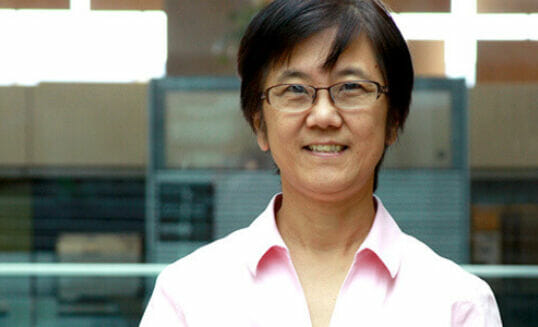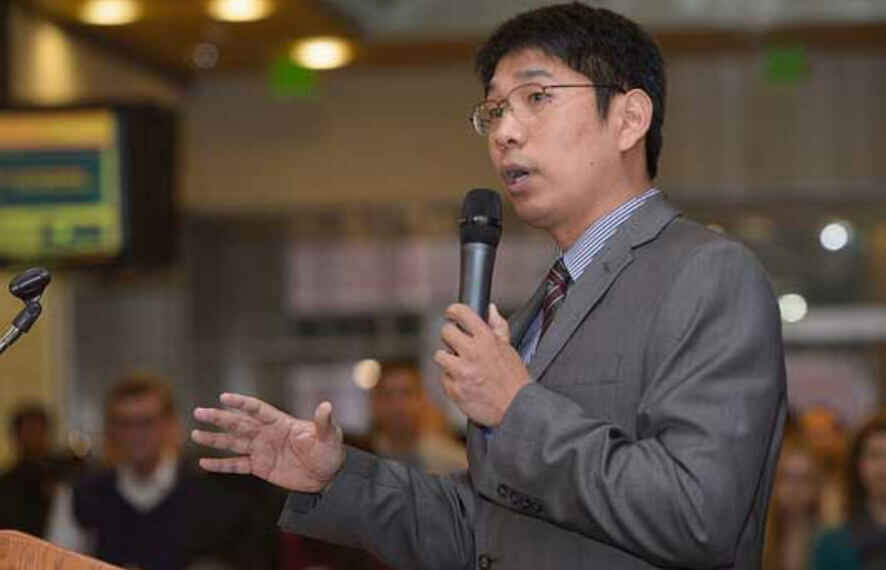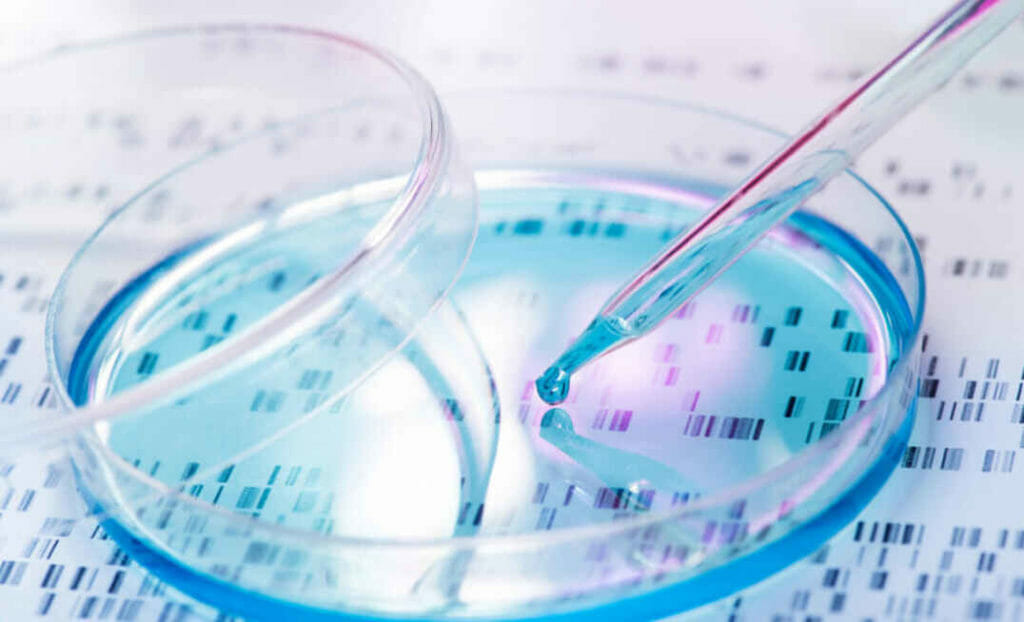
Microscopic robots and DNA origami
Two ASU scientists are working to cure cancer with a set of technologies that have the potential to transform entire industries, create new materials and spawn new enterprises beyond oncology and medicine, which just might spark a twenty-first century scientific revolution.
Professors Hao Yan, director of the ASU Biodesign Institute Center for Molecular Design, and Yung Chang, an investigator in the Biodesign Institute Center for Immunotherapy, Vaccines and Virotherapy, are working to catalyze such a revolution. Yan and Chang have spent the past three years piloting self-folding DNA “nanostructures” that can change how medical therapies are delivered, challenging our understanding of how the immune system can be manipulated.

Two ASU researchers, untold industry potential
Chang, a pioneer in the exploration of three-dimensional DNA nanostructures (also known as “DNA origami”) for immune modulation has utilized the innovative microtechnology to enhance target-specific immune responses. By using these DNA nanostructures as a scaffolding platform to construct multifunctional complexes, Chang is now working to improve vaccine efficacy and create other immunotherapeutics for treating cancer and infectious diseases.


In parallel with Chang’s work, Hao Yan has discovered how to intercalate these nanostructures with therapeutic proteins, engineering an army of fully autonomous cancer-fighting “nanorobots.”
An article from the journal Nature Biotechnology released in February 2018, details the groundbreaking results of Yan’s latest research: in a number of mouse trials targeting human breast, melanoma, ovarian and lung tumors, Yan’s nanorobots successfully stunted or reversed tumor growth, significantly prolonged life expectancy and — perhaps most remarkably — demonstrated potential remissions in what remain some of the most fatal human cancers.
Of mice, men and microtechnology

Yan (then a researcher at ASU Biodesign) and Skysong Innovations (then Arizona Technology Enterprises) first crossed paths in 2005, when Yan presented a proposal to develop “aptamer-binding technology” oriented towards tumor regression. At the time, Yan’s research team hoped their initiative would help them target unique proteins, or aptamers, located only on the surface of tumor cells. Drawing from Chang’s discoveries in DNA engineering, Yan planned on implanting DNA nanostructures with clotting enzymes, folded and “locked” into the DNA helices, which might then seek out and bind to cancerous tissues via aptamer detection. Once the nanostructures had latched onto the cells’ surfaces, Yan hoped they could be programmed to unzip, delivering tumor-starving enzymes to cancerous growths while leaving healthy tissues intact.
Yan’s dedication paid off. According to the new Nature article, the mice’s tumor cells first began to show signs of clotting within just 24 hours. Three days after being injected with antigen-packed, tumor-seeking nanostructures, all extant tumor vessels had been clotted and were being progressively starved of blood and oxygen. And just as incredibly, none of Yan’s studies detected any adverse or unforeseen effects in the mice’s healthy cells or in cancer-free controls.
Pioneering new trends in cancer therapy – and beyond
The results of Yan and Chang’s work carry groundbreaking potential for the medical community. Whereas traditional chemotherapy is painful, time-consuming and life-limiting, with tenuous success rates and dangerous side effects, nanorobots just might transform what is often a last resort in treatment to a potential first recourse in cancer therapy. And because the nanostructures target proteins that are preferentially expressed on cancer of different cell types, regardless of cancer type, but not normal cells, the team believes their discoveries may have the capacity to treat multiple types of cancers.


In line with Yung Chang’s research, Hao Yan’s team speculates that the same microengineering mechanisms deployed when embedding DNA nanostructures with therapeutic agents might also be able to facilitate T-cell binding. This could enable them to create self-engineering T-cells, capable of expressing and delivering multiple types of proteins, drugs or other therapies. In an effort to build on this potential, Yan and his team are currently seeking partners who could help accelerate and expand the clinical applicability of their technology.
The truly disruptive impact of these technologies, however, extends to areas far outside the field of oncology. Since the researchers have effectively developed a microengineering platform — the ability to embed nanostructures with different biochemical agents — the wide-ranging potential of their innovations could revolutionize and possibly launch entirely new industries.
Developers in diverse sectors of bioscience and engineering, for instance, might use the technology to create dynamic suites of nanorobots programmed to target, protect, destroy or otherwise alter different attributes of various organisms. Their discoveries could be used to generate unprecedented solutions for some of the most complex problems in nutrition, agriculture, biosustainability, energy and even defense.
